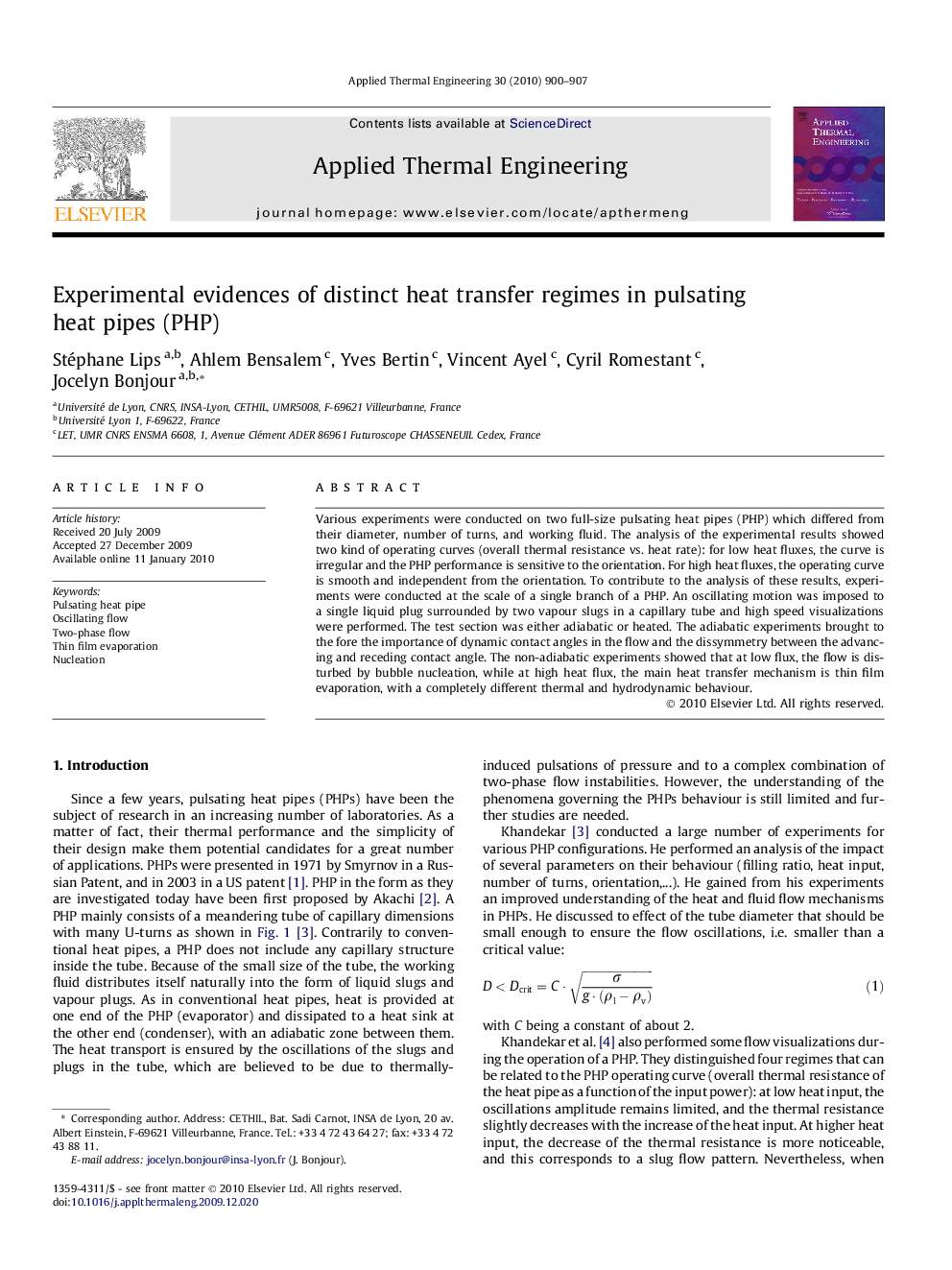| Article ID | Journal | Published Year | Pages | File Type |
|---|---|---|---|---|
| 648448 | Applied Thermal Engineering | 2010 | 8 Pages |
Various experiments were conducted on two full-size pulsating heat pipes (PHP) which differed from their diameter, number of turns, and working fluid. The analysis of the experimental results showed two kind of operating curves (overall thermal resistance vs. heat rate): for low heat fluxes, the curve is irregular and the PHP performance is sensitive to the orientation. For high heat fluxes, the operating curve is smooth and independent from the orientation. To contribute to the analysis of these results, experiments were conducted at the scale of a single branch of a PHP. An oscillating motion was imposed to a single liquid plug surrounded by two vapour slugs in a capillary tube and high speed visualizations were performed. The test section was either adiabatic or heated. The adiabatic experiments brought to the fore the importance of dynamic contact angles in the flow and the dissymmetry between the advancing and receding contact angle. The non-adiabatic experiments showed that at low flux, the flow is disturbed by bubble nucleation, while at high heat flux, the main heat transfer mechanism is thin film evaporation, with a completely different thermal and hydrodynamic behaviour.
